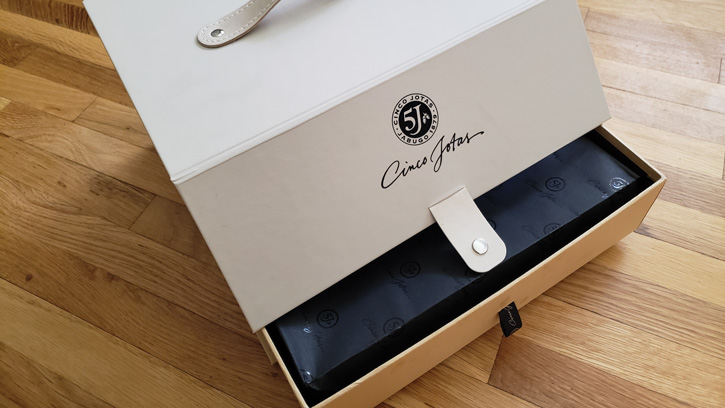Meat Packaging Design Captures Consumers’ Attention
PACKAGING
Top-quality meat packaging performs a variety of functions for the perishable product inside. Packaging design communicates the distinctive value of meat, relaying brand image through vital design elements for ease of on-shelf recognition and delivering critical information on shelf life, food safety, and handling. Packaging science also plays a role in protecting meat to ensure that waste is minimized from farm to fork. While meat waste occurs across the supply chain, recent research suggests that 50% of household food waste in the meat category is related to packaging functions (Jeswani et al. 2021).
Reaching Out at Retail
The varied display factors in the retail environment make it challenging to design meat packaging to reach consumers. Pack-aged meat display at retail includes horizontal large-capacity chest freezers, in addition to horizontal and vertical refrigerated cases containing horizontally or vertically stacked or slotted packaged meat or pegged flexible pouches. The variety of display environments means that consumers view packaged meat from various angles and lighting, and even through glass doors.
Using high-quality packaging graphics and texture, along with optimizing allocated space to portray the product use and value, meat brands gain a more impactful presence in retail space. Packaging for the Land O’Frost Premium Sliced Meat line, for example, features the image of an enticing deli sandwich projected onto the front panel of a reclosable pouch. This eye-catching meal solution image, essentially a translation of the sliced meat contents into a deli sandwich, is now possible with digital printing. High-quality digital printing provides high-level product detail and enables complex images on the package to communicate both the product and its use, eliminating the need for transparent package windows through which actual product can be seen.
High print density and light barriers also inhibit light-induced lipid oxidation that can cause discoloration on the exposed surface of the meat. The Land O’Frost package has a transparent back panel that allows consumers to view the sliced meat while limiting retail light exposure to that side of the package.
Material innovation and blending of packaging materials can communicate meat freshness to consumers too. Amcor’s Paperly presents the consumer with a “just sliced” look within a structure that is 85% paper and 15% polyethylene (PE) and ethylene vinyl alcohol (EVOH). The structure is thermoformable to a depth of 15 mm and has lidding with a unique textured, nonglossy, haptic paperlike quality.
Designing packaging to decrease the footprint of meat that requires refrigerated and frozen display also has major retail positives, such as being able to offer more facings of products in the same amount of space. Reorienting product within a package can make this possible. The redesigned Buddig recyclable package, for example, has 50% less width, so a larger variety of products can be displayed to consumers within the same refrigerated display space. In addition, downsizing packaging for a smaller footprint often results in lower package material costs and environmental impacts.
Elegant Design for Premium Meat
Meat package design and science that pleases consumers presents product in an impactful way while meeting the need for suitable shelf life and product quality. Packaging accomplishes this with elegant design and a focus on reducing consumer-derived meat waste by stalling degradative reactions.
Elegantly designed meat packaging conveys a product’s premium nature. Consider Cinco Jotas, a legendary brand with over 130 years of distinguished packaging for Iberian pork products. Jamon iberico de bellota (Iberian ham from acorn-fed pigs) is a unique product specific to Spain. Iberico pigs consume acorns exclusively during the 3 mo before slaughter, and then the pork is cured and aged 2–4 yr in specific conditions, resulting in an orchestra of flavors.
The Cinco Jotas package is refined, connecting with a respect for the unique product and its origin. It consists of an outer carrying case containing drawers filled with sealed Iberian ham. The carrying case outer walls and inner shelf are almost ¼ in thick paperboard and form a rigid box that features a stitched handle attached with metal rivets. Metal feet elevate the carrying case, and this assists with the presentation.
The entire reusable case is wrapped with moisture-resistant leatherlike skin and embossed on the front with the Cinco Jotas 5J logo. Consumers see this logo when releasing the metal snap that secures two front flaps of the outer case. To access the ham, consumers use cloth drawer pulls to open one of the two drawers. Within each drawer is a 5-point thick black paper envelope embossed with the company logo, and this is sealed with a precinto de garantia (guarantee seal) tamper-evident sticker. The envelopes contain 1.5 oz stacks of presliced Iberian ham within high barrier shallow trays sealed with easy-peel high barrier lidding. Removal and inhibiting the ingress of oxygen within the primary package preserves the unique flavor and texture of the Iberian ham.
Cutting Down on Meat Waste
Reducing meat waste is one way that packaging can reduce the environmental impact of supplying meat to consumers. Meat packaging strives to both reduce food waste and reduce the environmental impact of packaging. Meat waste from farm to fork is 12% by weight, which is among the lowest of all tracked categories, but meat represents 30% of food waste in dollars, due to its high value. Improved packaging solutions can reduce beef waste by 16% for consumers and 7% for retailers (ReFED 2016), but the high economic value and environmental impact of meat warrants more effective packaging.
More sustainable packaging can deter degradative reactions in meat—oxidation, microbial growth, and moisture loss—as well as reducing the environmental impact of meat packaging. Browning of red meat is due to oxidation into metmyoglobin, and fats within meat are prone to lipid oxidation. Defined barrier packaging, vacuum packaging, and modified atmosphere packaging (MAP) all retard against oxidation.
Vacuum packaging individual portions of meat reduces meat waste by retaining meat quality and inhibiting freezer burn because headspace is minimized. For example, Sealed Air’s easy-open vacuum skin DarFresh, a recycled polyethylene terephthalate (PET) flexible film, decreases oxygen within the package and can extend meat shelf life considerably. And because vacuum packaging conforms to the exact shape of the product, less packaging material is used than with nonvacuum packaging. Although poultry generates off-odors upon oxidation, odor-absorbing packaging and the addition of marinades within vacuum packaging hinder odors.
Microbial growth in meat can be inhibited with MAP. Blends of carbon dioxide, nitrogen, carbon monoxide (allowed at 0.4% in the United States), and oxygen extend the shelf life of red meat packaged within primary and then high-barrier secondary packaging, using a concept called master pack. The master pack structure is essentially a high-barrier secondary package with a low-barrier primary package.
Common secondary packaging within a master pack includes a barrier layer composed of EVOH, a sealant, and an outer layer consisting of PET for heat seal resistance.
Oxygen absorbers may be added to master packs to reduce oxygen levels further and retard oxidation and microbial growth. When the product is ready to be displayed at retail, the low-barrier primary packaging is removed from the high-barrier secondary packaging. The common low-barrier overwrap and polystyrene tray primary package system has an oxygen transmission rate of about 60,000 cc m-2day-1, and this allows the meat to bloom to a bright red color.
Reducing the microbial load of packaged meat after it is packaged also extends shelf life. Hormel Natural Choice sliced deli meat, for example, is high pressure processed within the package, which requires exceptional seal integrity due to the high pressure processing environment. Ethylene copolymers and ionomers containing sodium and zinc advance protein adhesion and reduce the amount of residual liquids within the package.
Although the environmental impact of packaging is low compared with the impact of meat waste on the environment, more sustainable packaging is still an important goal. Reducing the amount of packaging is the preferred way to make packaging more sustainable, because less packaging means less energy is needed for producing, distributing, and disposing of the packaging.
The common format for ground beef packaging, a polystyrene (PS) foam tray with an overwrap, and the chub package have a low environmental impact because both minimize the use of packaging, according to research funded by the Beef Checkoff program (AURI 2020). The semirigid PS tray is composed of PS interspersed with air, and this network provides strength as well as insulative properties. Because the tray contains only about 5% PS and is about 95% air, plastic and packaging are minimized. PS can be recycled at North American drop-off sites, and in many countries it is picked up for recycling at consumers’ residences. Likewise, the ground beef chub package provides for minimal headspace, eliminating freezer burn and allowing for ease of storage and efficient packaging transport. Because the package and product are in intimate contact, package material use is also minimized.
REFERENCES
AURI. 2020. Final Report for More Sustainable Packaging Solutions to Improve Consumer Confidence in Ground Beef. Agricultural Utilization Research Institute, Crookston, Minn. auri.org.
Jeswani, H. K., G. Figueroa-Torres, and A. Azapagi. 2021. “The extent of food waste generation in the UK and its environmental impacts.” Sustain. Prod. Consum. 26(4): 532–547. doi: https://doi.org/10.1016/j.spc.2020.12.021.
ReFED. 2016. A Roadmap to Reduce U.S. Food Waste by 20 Percent. ReFED Inc., Long Island City, N.Y. refed.com.




